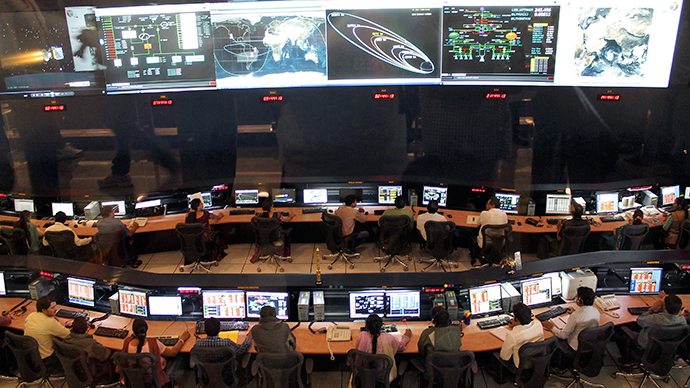India's low-cost space mission reaches Mars orbit

India has become the first nation to reach Mars on its maiden attempt after its Mars Orbiter Mission completed its 10-month journey and successfully entered the Red Planet’s orbit. bit.
The Indian Space Research Organization’s unmanned drone, also called Mangalyaan, was programmed by Indian engineers to fire its main engine and eight smaller thrusters for 24 minutes, starting at 0147 GMT in order to make the spacecraft's final maneuvers into Mars' orbit.
MOM is in Mars Orbit. India just became the first country to put a spacecraft into Mars orbit on its first try #MarsOrbiter@ISRO
— India Space (@India_inSpace) September 24, 2014
The spacecraft has executed the arrival sequence autonomously with engineers receiving the telemetry with 12-and-a-half minute delay at ISRO's control center in Bangalore due to the 139 million miles separating Earth and Mars.
“History has been created today,” said Indian prime minister Narendra Modi. “We have dared to reach out into the unknown and have achieved the near-impossible. I congratulate all ISRO scientists as well as all my fellow Indians on this historic occasion.”
On the orbit, the unnamed probe is set to study Mars’ surface and scan its atmosphere for evidence of some sort of life. The probe is expected to circle Mars for six months, about 500 kilometers (310 miles) from its surface. Its five scientific instruments will collect data and send it back to Earth.

The Mangalyaan is equipped with a color imaging camera, a thermal infrared spectrometer to measure the chemical composition of the surface, and instruments to assess the Mars atmosphere, including a methane detector.
Lighter than ‘Gravity’: Why the world should take note of India’s Mars mission
The Mars Orbiter Mission, a low-cost $74 million project, blasted off from Earth on November 5, 2013, aboard an Indian Polar Satellite Launch Vehicle. At its initial stage, the rocket booster placed the probe into Earth's orbit before the craft fired the engines to break free of Earth's gravity en route to Mars.
This is India's first mission into such deep space to search for evidence of life on the Red Planet. But the mission's primary objective is technological – if successful, the country will be joining an elite club of nations: the United States, Russia and Europe.














